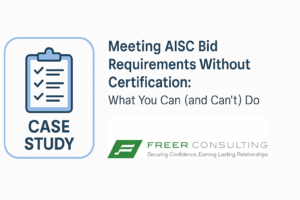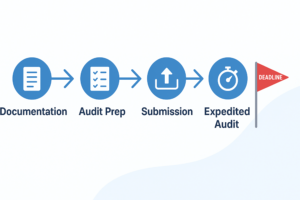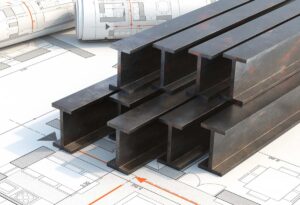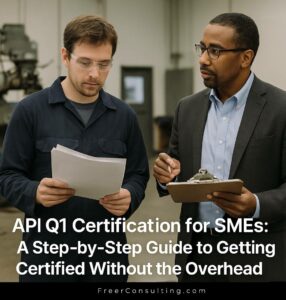Organizing compliance activities and their associated documents is key to confidently, efficiently, and effectively passing both internal and external audits and inspections as well as preparing for operational expansion.
It is important to determine:
- Is this an existing company with years of compliance related documentation which needs to be organized, archived, or disposed of?
- Is this a startup considering expanding new or existing operations into a new region?
- Is navigating the compliance arena one of the bottlenecks to expansion?
- Is maintaining regulatory compliance difficult or intimidating?
If the answer is yes to any of the questions above, then continue reading to help get support in navigating and organizing the complex compliance arena in order to efficiently facilitate any compliance audit or inspection with ease and/or confidently expand operations to include another activity or location.
1. Ask the Big Questions
Using an ISO9001 standard, process-based approach as a foundation not only provides guidance regarding the best ways to get organized, but it also sets the stage for obtaining future safety, quality, and environmental certifications.
Begin by thinking about required compliance related to company processes such as:
- HSQE (health, safety, quality, environmental)
- Facilities and Maintenance
- Contractual Obligations
- Operational Planning
- Training
Then ask the question:
What are the fundamental components that are required to be documented to ensure these processes are going to run smoothly and consistently, time and time again?
The same concept applies to regulatory compliance. Think about the processes outlined above that require permits, certifications, licenses, and other compliance documents as well as their associated training and reporting requirements. This prompts the question:
What are the fundamental things that should be documented to ensure that compliance requirements are captured; renewals, expirations, and reports are completed on time; and documentation of compliance is readily available when inspections and audits occur?
2. Get Organized
Regardless of which service is used to enable the sharing of documents, a simple folder structured by Process provides a baseline for organizing data. Allowing multiple users permission to save documents in the system provides more flexibility by being able to upload pertinent documents in a timely manner. For example, when creating a main folder titled Environmental Compliance, a subfolder with categories such as Air, Land and Water can be used to separate the records into sub-sections.
Every folder structure looks different depending on the type of processes that are involved with the operations. A company that manufactures widgets may need to focus on waste disposal. A company that provides coating will most likely want to focus on air emissions and hazardous waste. A company that has above, or underground storage tanks might focus more on stormwater permits and the SPCC Rule.
Obtaining a fundamental understanding of each company’s processes and organizing the associated documentation in relation to those processes will not only provide the foundation for an organized system but will also help employees access the information in an easy and efficient way. This step is crucial in exhibiting control and confidence in providing requested documentation during an audit, inspection, or expansion.
3. Collect Existing Documents
Once a sound foundation has been established for organizing the data, begin collecting this information and placing it into its respective folders. If a hazardous waste permit or manifest was located, it should be scanned and placed into a Hazardous Waste subfolder. If an annual stormwater report is discovered, it should be saved into the appropriate subfolder. If an opacity test was found in the break room, take a picture of it and save the phone in the Air Emissions subfolder.
As the documents are compiled over time, track them in a simple excel spreadsheet by noting the regulating agency, title, description of compliance activity, and expiration or due date. This matrix will become the foundation of tracking and monitoring all compliance activities.
4. Re-evaluate & Reorganize
Once enough documents and data are collected, re-evaluate the existing documentation and re-organize if necessary, so the information is clear and makes sense to the end user. The folders and subfolders can change over time. Don’t be afraid to make change the folder names and hierarchy if it seems prudent. This can help avoid confusion down the line. If the folders become cumbersome, consider whether a simple software program would help with the organization, especially if the software sends push notifications to a specific person or group of people when items are due.
5. Maintain Diligent Upkeep
Once the system is established, it is easy to get caught up in the day-to-day operational activities and neglect the time necessary to prioritize staying on top of organizing compliance documents. If an employee is not careful, an entire quarter or year can pass by with a stack of unfinished paperwork gathered at the corner of a desk with the Compliance Matrix showing numerous expirations.
Maintaining diligent upkeep of the system is key to passing an unannounced inspection, and it is crucial in avoiding a last-minute scramble for documentation when preparing for an announced one. Generally, simple applications are available on your phone which interface with the software or other programs being utilized. These applications allow a user to take a picture or scan of a document and upload it to the appropriate folder. Luckily, most applications allow the title to be changed upon saving, so it is possible to easily maintain a consistent naming convention for the documents.
Analyzing Operational Expansion
With a well-established and maintained compliance system in place, completing the due diligence to expand operations into different regions becomes significantly easier. By reviewing the existing Compliance Matrix line by line, it is easy to determine if any of the process-based operational activities apply to the new location. If the answer is yes, then add a line in the matrix and save all the documentation in the applicable subfolder for the new operation. Staying on top of the necessary paperwork is half the battle but doesn’t need to be daunting in the right processes are in place.
Cross-posted at The Compliance & Ethics Blog
Freer Consulting can help you with your (AISC certification needs) [ https://www.freerconsulting.com/environmental-compliance-consultants], contact us at 206-285-9044 or [email protected]







